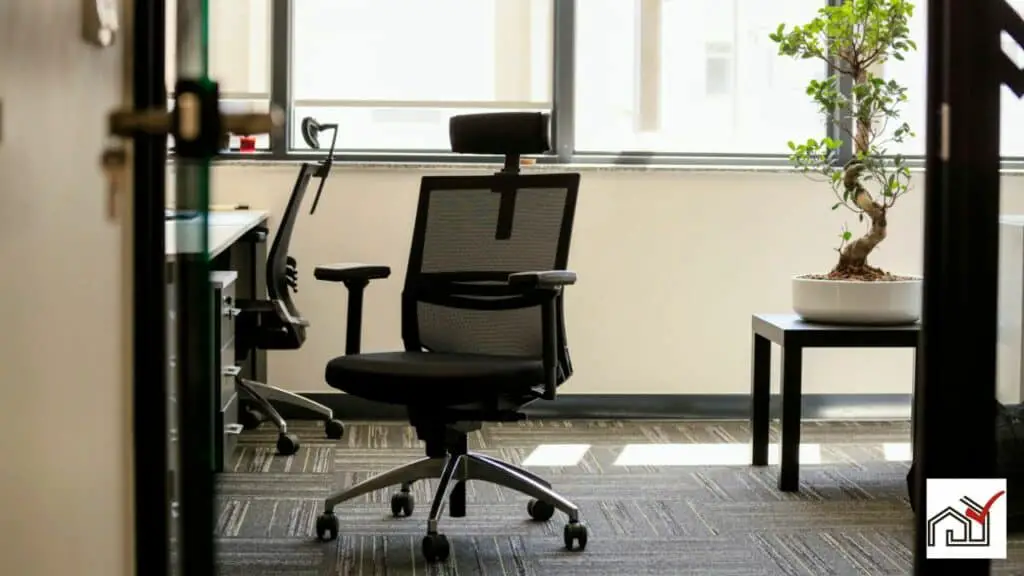The standard height of a desk is typically 29 to 30 inches (73 to 76 centimeters) from the floor to the top of the work surface. This height is based on the average adult's height to ensure comfort for users around 6 feet tall.
However, this standard height may not be suitable for everyone, as individual needs, tasks, and equipment vary. Therefore, height-adjustable desks are recommended to accommodate different users and promote ergonomic comfort.
Understanding Standard Desk Height
The standard desk height is typically 29 to 30 inches, designed to accommodate individuals around 6 feet tall. However, ergonomic considerations are important for comfort and health in the workplace.
Desk height should allow a person's elbows to rest naturally when seated, reducing stress on the back, neck, and shoulders. People who are not close to the average height may need desks that are higher or lower for ergonomic alignment.
For standing desks, the average height is about 47 inches, but being able to adjust the height is essential, especially in shared workspaces or when alternating between sitting and standing.
Importance of Correct Desk Height
Correct desk height is essential for comfort and preventing health issues in a work environment. Desks are typically about 29 inches high, but this may not suit everyone due to different body sizes. The ideal desk height helps a person sit with a straight posture, reducing the chance of muscle problems.
A desk that matches an ergonomic chair should allow a person to keep their feet flat on the ground and their arms level with the desk surface. This position can reduce strain on the back, neck, and shoulders, and prevent pain. An adjustable desk also allows for standing, which is good for circulation and reduces risks from sitting too long.
Monitor height is also important. The screen should be at or just below eye level to avoid neck strain. The right desk and monitor setup can improve productivity, focus, and energy, leading to better work and satisfaction.
Measuring Your Desk Height
To measure your desk height, use a tape measure from the floor to the top of the desk. The typical desk height is 29 to 30 inches, ideal for people around 6 feet tall, but this varies based on individual height and seating preferences.
For adjustable desks, you can change the height to suit your needs, with common standing desk heights around 47 inches. With a fixed desk, you might need to adjust your chair or use a footrest or desk riser to get the right height.
To find the best desk height for you, sit with your feet flat on the floor and measure from the floor to your elbows. Your desk should allow your arms to rest parallel to the floor while typing or writing to reduce shoulder and wrist strain.
A correct desk height depends on personal requirements for a comfortable posture and increased productivity. Measuring your desk height is a critical step to ensure your workstation is ergonomically supportive.
Ideal Height for Seated Desks
The proper height for a seated desk is crucial for comfort and productivity. An improperly sized desk can lead to discomfort and potential musculoskeletal problems. The best desk height is generally level with your elbows when you're seated, which allows your arms to be parallel to the ground without strain. This reduces the risk of fatigue from reaching or bending to use your desk.
If a desk isn't adjustable, an ergonomic chair that can be adjusted is an alternative to achieve proper alignment. The chair should be set so that your feet are flat on the floor and your knees are bent at a 90-degree angle.
For exact desk and chair height settings, use a height calculator based on your measurements. Ensuring your desk is at the correct height is important, as even a difference of 1 or 2 inches can be significant.
Adjusting to the Right Height
Adjusting a desk to the correct height is important for comfort and productivity. The ideal height allows the user to maintain a neutral position whether seated or standing. For seated positions, the desk should enable the arms to rest at a right angle with the elbows close to the body and forearms level.
Office desks often have features to adjust their height to meet individual needs. Sit-stand desks are particularly versatile, allowing users to switch between sitting and standing. These desks can accommodate a wide range of heights.
When sitting, the chair height should be adjusted so that the user's feet are flat on the floor and knees are bent at a right angle, supporting the lower back. The computer desk height must also account for monitor placement, with the top of the screen at or just below eye level to prevent neck strain.
The aim is to create an ergonomic workspace that supports correct posture and movement. Proper desk height helps users work comfortably for longer periods and reduces the risk of musculoskeletal issues, improving workplace health.
Standing Desk Height Standards
A standard standing desk is usually about 47 inches tall to accommodate comfortable use while standing. These desks are designed for better posture and health during work. Their popularity has grown due to health advantages and the ability to fit various user heights.
For proper ergonomics at a standing desk, the monitor should be at or just below eye level, achievable with a monitor arm. An adjustable chair should complement the standing desk to ensure comfort over long work periods.
The keyboard should be positioned so that typing allows for a 90-degree angle at the elbows, aligning them with the desk to reduce arm and wrist strain.
Adjustable standing desks are beneficial as they can be tailored to individual heights, improving alignment and reducing discomfort or injury risks.
Tips for Ergonomic Desk Setup
An ergonomic desk setup improves comfort and productivity. It should support good posture and minimize the risk of injury, such as back pain. The desk height must allow for a natural lower back curve, supporting a neutral spine.
Adjustable desks are recommended for those who switch between sitting and standing, maintaining proper desk height. When sitting, feet should be flat on the ground or on a footrest, with knees at hip level. A supportive chair is necessary to avoid slouching and back strain.
The monitor should be in front of you, arm's length away, with the top no higher than eye level to reduce eye strain and maintain a straight head position. A keyboard tray is advised to keep the keyboard and mouse close, with elbows at a 90-degree angle to avoid arm strain.
Following these steps ensures a work environment that promotes health and productivity, decreasing the chance of ergonomic-related problems.





